Photographer Marie Cécile Thijs Makes Portraits of Flemish Felines and They’re Purrrfect
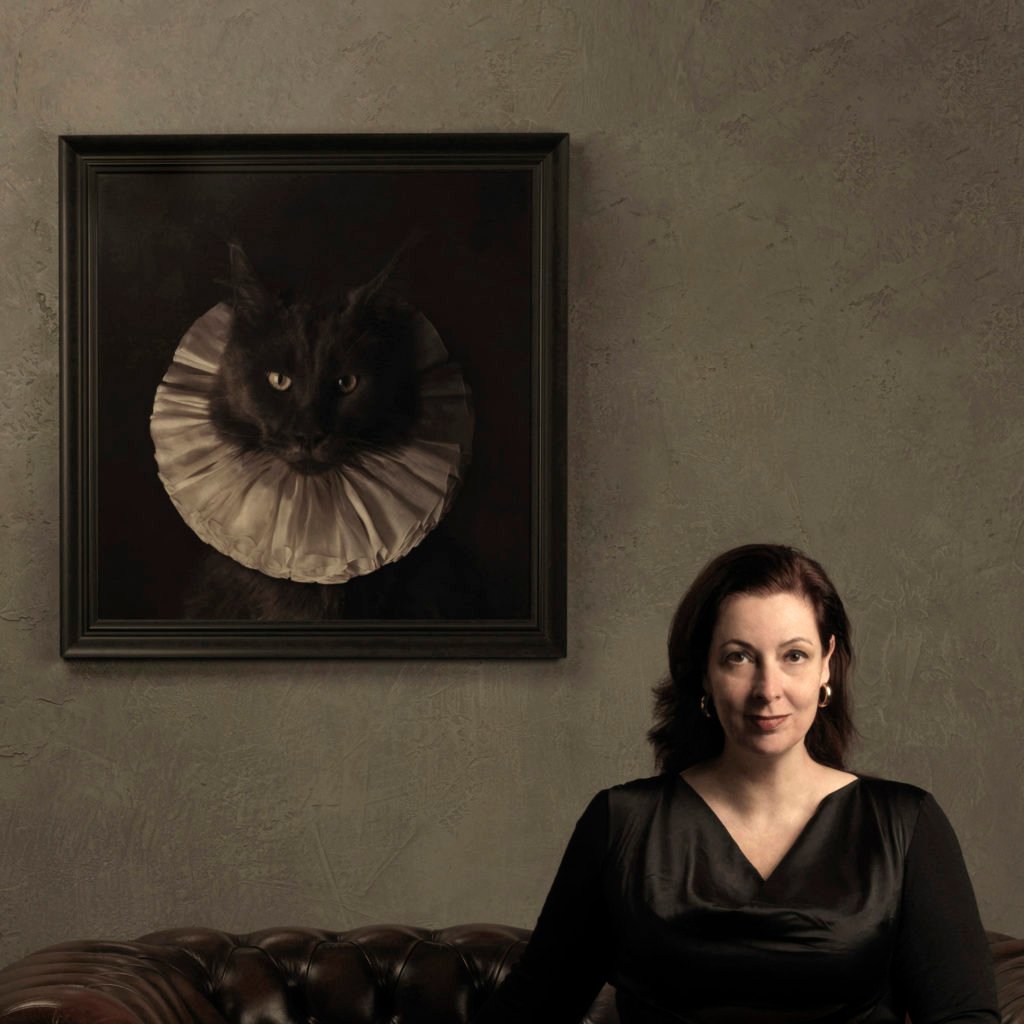

Artnet Gallery Network

At first glance, the photographs of Dutch artist Marie Cécile Thijs don’t look like photographs. They look like paintings. Specifically Old Master paintings, the kind portraying stately portraits of royalty, or elaborately arranged food still lifes. Employing the lighting techniques, styling, and deadpan affect of painters from the Dutch Golden Age of painting, Thijs invokes the lineage of her country’s forebears, such as Rembrandt van Rijn, Hendrick Terbrugghen, Frans Hals, Pieter Claesz, and Johannes Vermeer.
Take, for instance, her “White Collar” series. It features animals and young female models wearing an antique ruff collar from the 17th century. Her “Food Portraits,” meanwhile, look like uncanny recreations of Willem Kalf compositions.
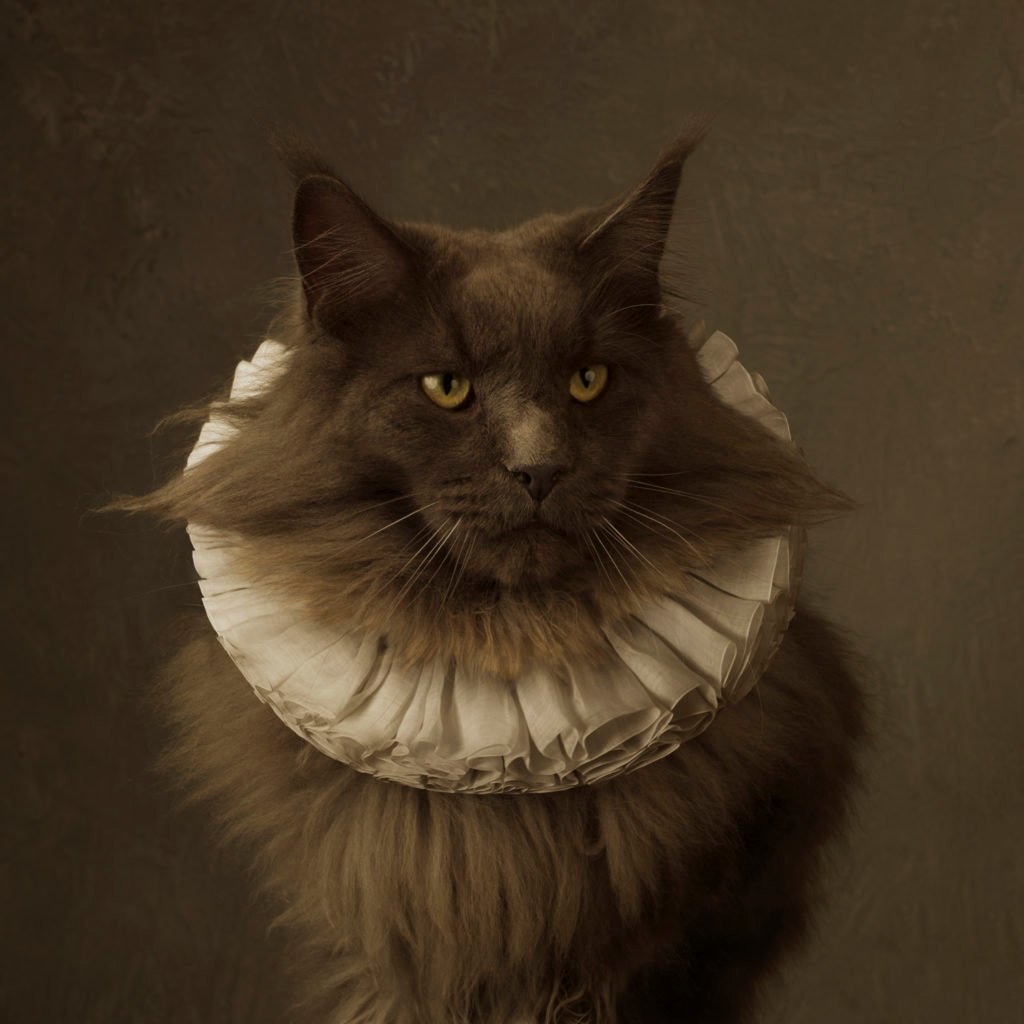
Marie Cécile Thijs, Cat with White Collar V (2014). Courtesy of Smith-Davidson Gallery.
For Thijs, who’s represented by the Smith-Davidson Gallery in the U.S. and the Netherlands, the connection is instinctual.
“I didn’t study art history in school,” Thijs tells artnet News, going on to note that the influence would have been hard to resist. Raised in Limburg, the southernmost part of the Netherlands—an area with a rich history of visual art—she was surrounded by art history from a young age and grew up in a house full of books about the Old Masters and modern art. “I don’t know what it was, but when I started to make photographs, I had a great connection with these old painters. Later, when I began doing portraiture, I started to study them on my own, and I felt a strong connection.”
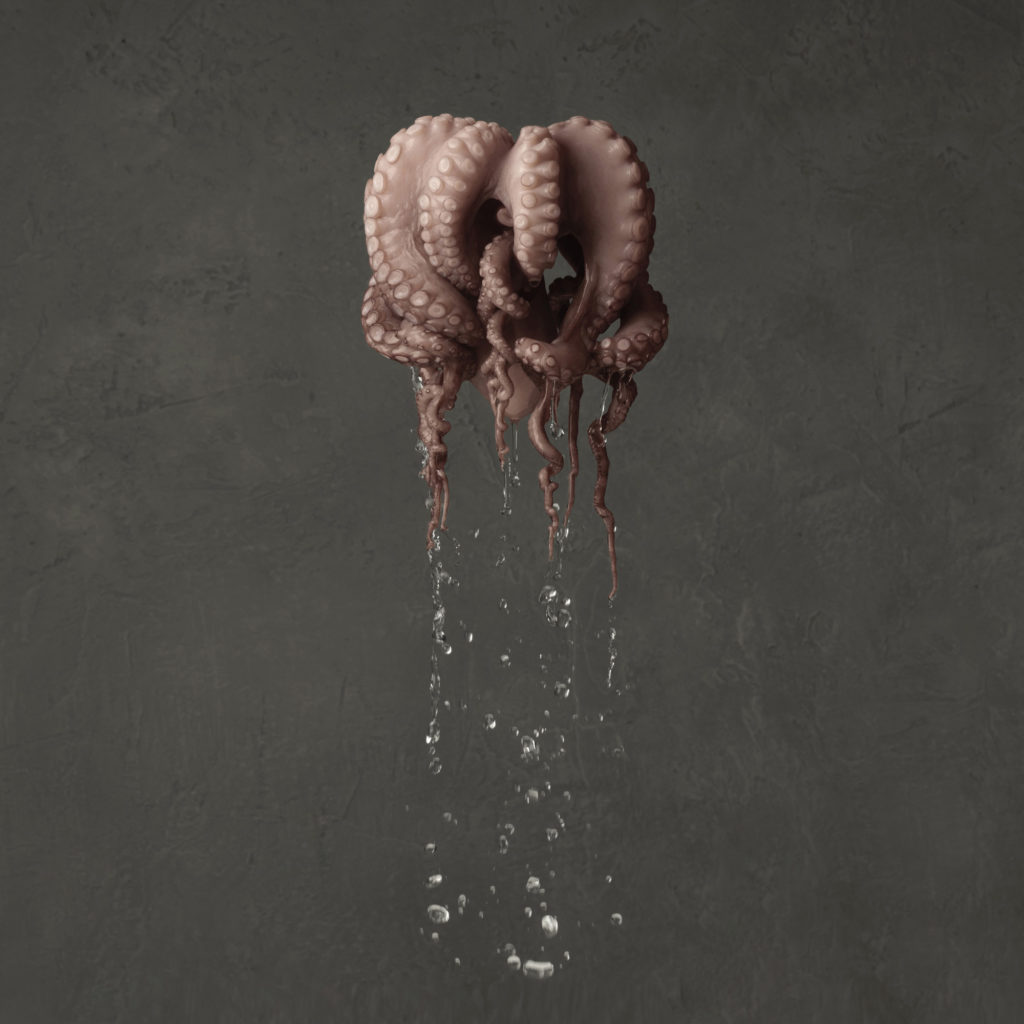
Marie Cécile Thijs, Octopus (2013). Courtesy of Smith-Davidson Gallery.
However, Thijs’s work is about much more than art historical homages. In fact, for her, that element is a rather small one; instead, the invocation of Old Master art is a way of achieving a sense of surreality. It’s about the disconnect between how we expect a contemporary portrait to look and the way her portraits do actually look; between photographic styles and painting styles; between old and new.
“My work is like a time machine,” says Thijs. “I like to play with structures from the past and bring them into the present.”
Indeed, when you look past the aesthetic decisions, the logic of Thijs’s pictures has more in common with the matter-of-fact surrealism of René Magritte than with Vermeer or Rembrandt. Much of that has to do with the treatment of her subjects, which often look like they’re from another time or place. That’s particularly true when she photographs animals, especially cats—something she’s done since she began the “White Collar” series in 2009.
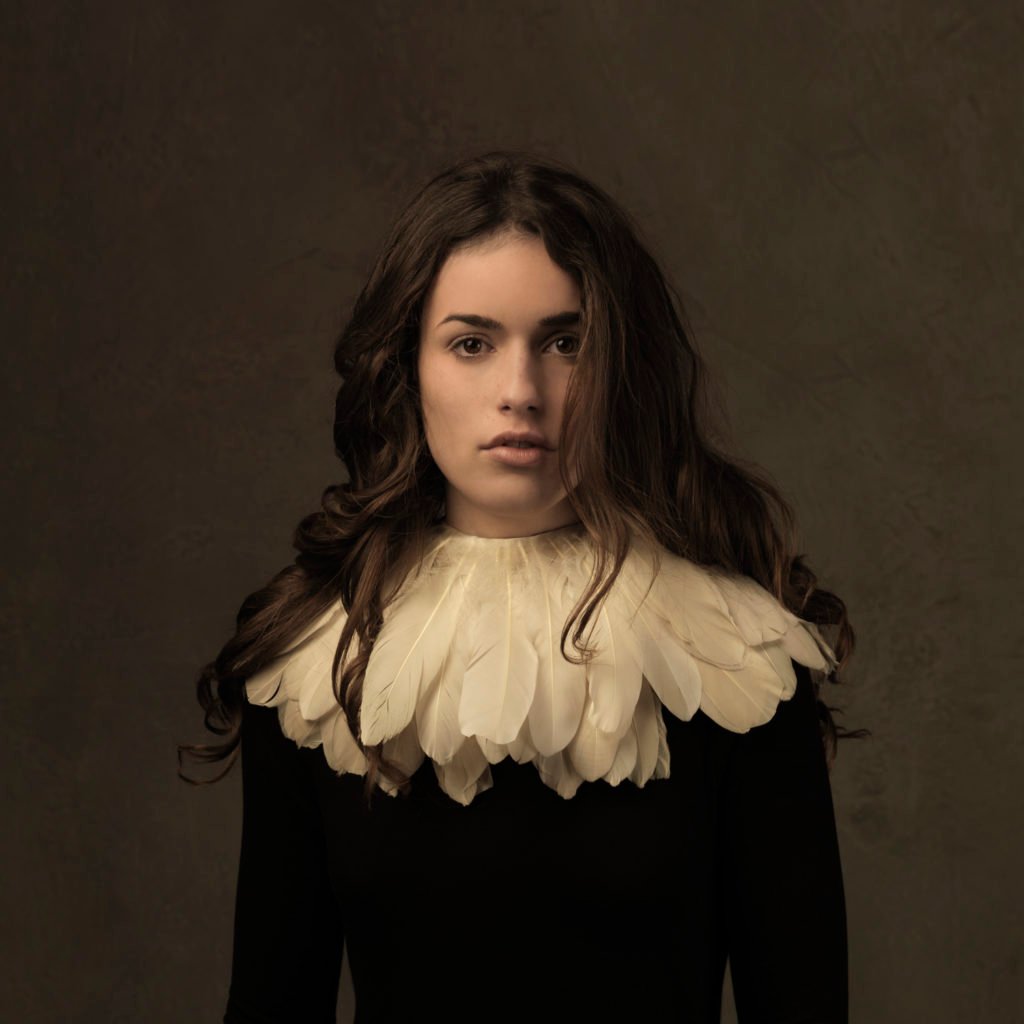
Marie Cécile Thijs, Girl with the Feather Collar (2014). Courtesy of Smith-Davidson Gallery.
Thijs’s cat photographs aren’t like the ones you’d see shared on Instagram and Twitter, though the sentiment behind them is not dissimilar. The pictures, which feature felines wrapped in a ruff collar or crowned with a tiara, celebrate the animal in the same way internet memes might. Her works, however, are embedded with a playful critique of that culture as well.
“Animals are a kind of mirror for human beings,” says Thijs. “When I make portraits of them, I give them a human personality—or they assume one.”
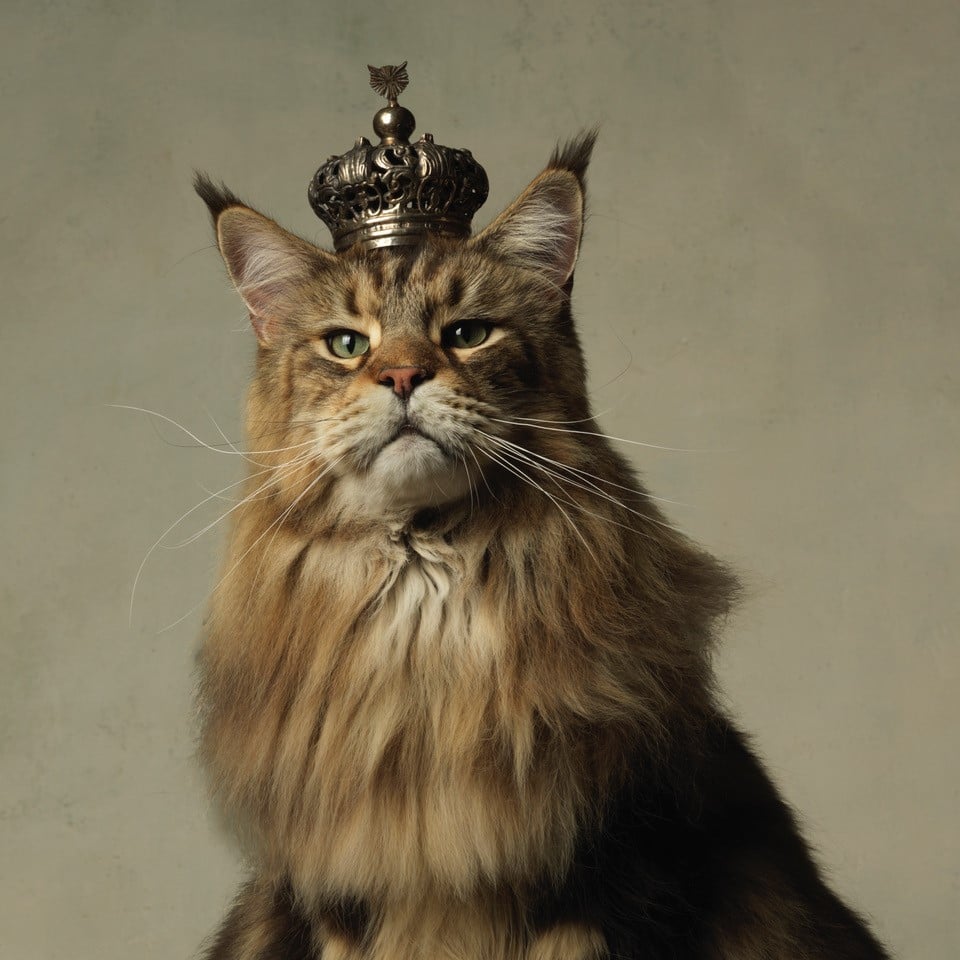
Marie Cécile Thijs, His Majesty (2011). Courtesy of Smith-Davidson Gallery.
Her studio, which must itself look like a surrealist picture from time to time—it’s not uncommon, after all, to see cats, fish, or chickens hanging around, waiting to be photographed—is where the transition away from reality begins. “I’m open to what’s happening in the moment,” says the artist. “That’s the benefit of photography—you’re working with the ‘moment.’ I work towards that dynamic moment, where everything falls together. When I reach that, when that moment arrives, that’s when I know the composition is complete.”
Incongruous though her work may be, it’s rooted in the same thing that most successful portraits are, regardless of their medium. “In the end,” she says, “to make a nice image, the most important thing is that it connects with the viewer. I want to make something that’s interesting on an emotional level.”
